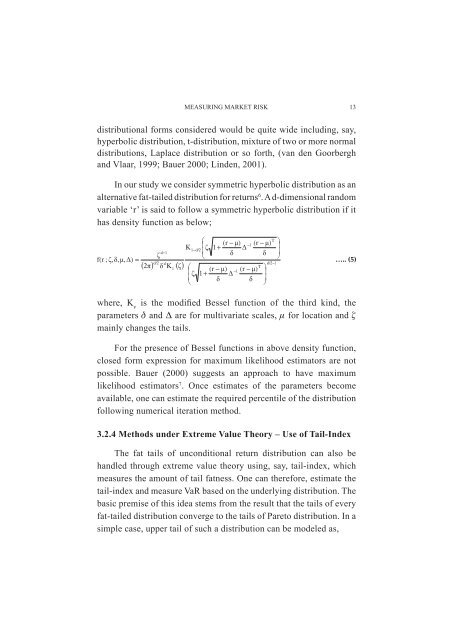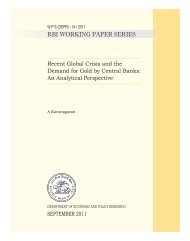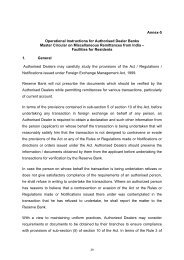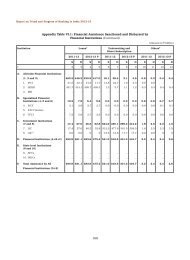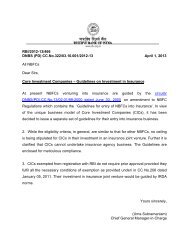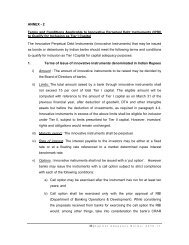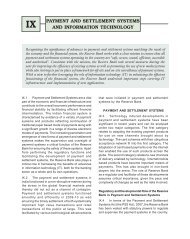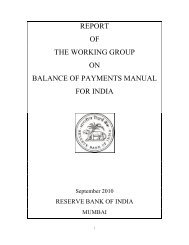Measuring Market Risk - Reserve Bank of India
Measuring Market Risk - Reserve Bank of India
Measuring Market Risk - Reserve Bank of India
You also want an ePaper? Increase the reach of your titles
YUMPU automatically turns print PDFs into web optimized ePapers that Google loves.
MEASURING MARKET RISK 13<br />
distributional forms considered would be quite wide including, say,<br />
hyperbolic distribution, t-distribution, mixture <strong>of</strong> two or more normal<br />
distributions, Laplace distribution or so forth, (van den Goorbergh<br />
and Vlaar, 1999; Bauer 2000; Linden, 2001).<br />
In our study we consider symmetric hyperbolic distribution as an<br />
alternative fat-tailed distribution for returns 6 . A d-dimensional random<br />
variable ‘r’ is said to follow a symmetric hyperbolic distribution if it<br />
has density function as below;<br />
where, K ν<br />
is the modified Bessel function <strong>of</strong> the third kind, the<br />
parameters δ and ∆ are for multivariate scales, µ for location and ζ<br />
mainly changes the tails.<br />
For the presence <strong>of</strong> Bessel functions in above density function,<br />
closed form expression for maximum likelihood estimators are not<br />
possible. Bauer (2000) suggests an approach to have maximum<br />
likelihood estimators 7 . Once estimates <strong>of</strong> the parameters become<br />
available, one can estimate the required percentile <strong>of</strong> the distribution<br />
following numerical iteration method.<br />
3.2.4 Methods under Extreme Value Theory – Use <strong>of</strong> Tail-Index<br />
The fat tails <strong>of</strong> unconditional return distribution can also be<br />
handled through extreme value theory using, say, tail-index, which<br />
measures the amount <strong>of</strong> tail fatness. One can therefore, estimate the<br />
tail-index and measure VaR based on the underlying distribution. The<br />
basic premise <strong>of</strong> this idea stems from the result that the tails <strong>of</strong> every<br />
fat-tailed distribution converge to the tails <strong>of</strong> Pareto distribution. In a<br />
simple case, upper tail <strong>of</strong> such a distribution can be modeled as,


